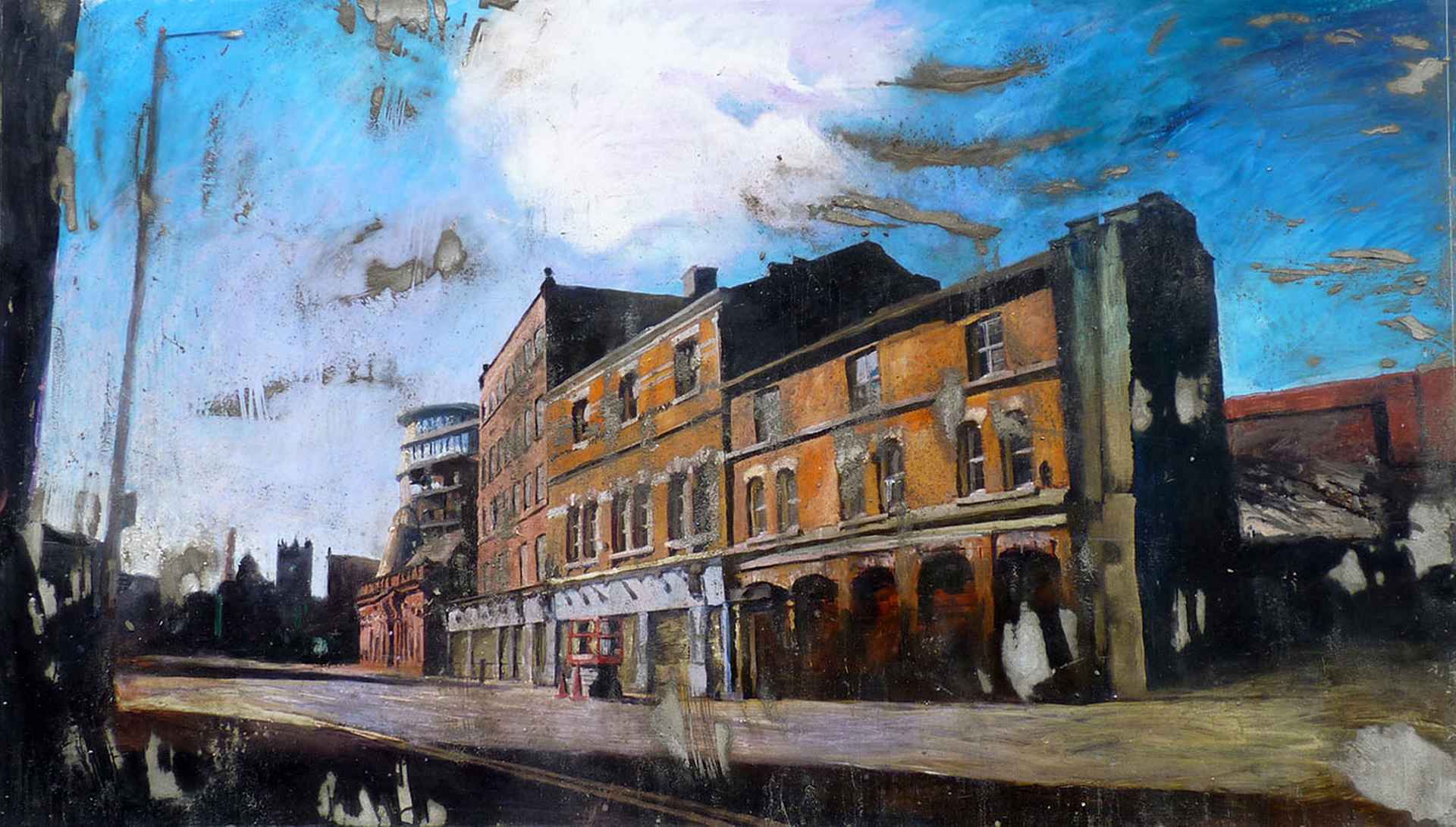
Sprung upon us like a page from a pop-up book, Tim Garner once again makes a return to Salford in 'Chapel Street Police Station'. A painting which captures the old Salford whilst it remains, this composition captures a street which is undergoing rapid change, following in the footsteps of the ever-growing cityscape of Manchester's city centre.
- Media: framed mixed media on board
- Dimensions: 130 x 78cm
- Price: £3400.00
Sprung upon us like a page from a pop-up book, Tim Garner once again makes a return to Salford in 'Chapel Street Police Station'. A painting which captures the old Salford whilst it remains, this composition captures a street undergoing rapid change. Here we are placed in the shadows, under an animated, vivid sky which has just cleared up after a heavy rainfall. The emerging sun casts a warm light over this row of red bricks, fostering an almost melancholy tone, as we wonder the fate of these buildings in light of rapid redevelopments in Manchester. In a recent interview with Garner, the artist recalls being very fond of this building - in contrast to many other works, this piece was painted on ground level, with the terraced row slightly elevated, as though placed on a pedestal. Garner stumbled across this setting when he first began exploring Manchester as a creative subject, after many years spent in Paris. He began to see the city through a new lens, and spent weeks, months, years, walking around Manchester, discovering every hidden crevice, finding inspiration in the areas that are often considered mundane. Garner became to know Manchester in a very intimate way, and through his painting, he began to pay ode to the spaces that often go unnoticed, capturing the physicality of the city through painting. “I just like that little terrace of buildings. They have a sort of abandoned elegance about them – a working class, brutal elegance, but it’s there nonetheless” Garner’s works are known for highlighting and embracing the juxtapositions between the old and new Manchester; those local to Manchester will be aware of it's ever-growing cityscape, which is sadly at the expense of some of the city's most historical structures. Garner ensures his paintings of Manchester are authentic and honourable - he understands the importance of community and identity within working-class areas such as Salford - his works respect and uplift this. His own personal memories of Salford are reflected in the sincerity of this piece - Garner clearly knows this area like the back of his hand, and is respectful of its rich history. Through a formula of of industrial materials such as metals and cement, Garner is able to appropriate the gritty physicality of his surroundings onto canvas, paired with a colour palette of metallics and iridescent paints to imbue texture, light and depth. Garner has a way of capturing the physicality and spirit of a city in a way that we feel as though we're in it - his works convey still moments in time, and snapshots of the mundane, anti-landmarks of a city, expanded to large scale compositions which demand our time and attention. Garner's works provide a still snapshot of a city that is constantly changing - they are their own pieces of Mancunian history. Garner views painting as a way of interpreting what's around us in a way that's both physical and metaphysical, to tell a visual story of an exciting and dynamic city.
Based in his home studio in Stockport, Tim Garner is an artist who captures cityscapes through his own avant-garde lens. Inspired from his time living between Manchester and Paris, Garner works from photography and photo collage as his primary references, taking advantage of their visual immediacy and accuracy. Paint and cement are then used as a way of injecting emotive layers of meaning, forming Garner's distinctive style and flair. Through this process Garner has established his own visual language, which is imbued with character. His works are comfortingly familiar to a Northern audience, whilst enlightening and educating wider audiences. A piece of Mancunian history, this artwork would be a valuable asset for any contemporary art space, collection or home.